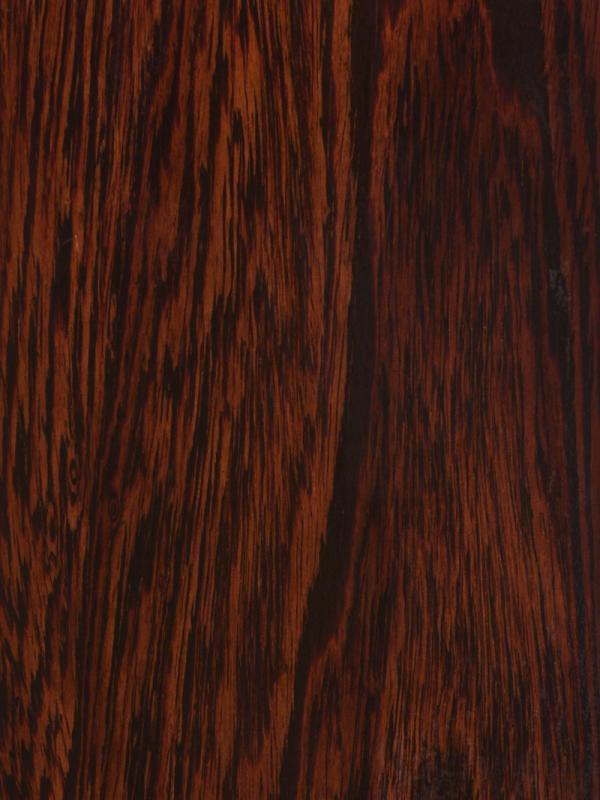
Family: Millettia Laurentii
Origin: Forests in Central Africa ranging from Southern Cameroon to Northern Angola and into the Democratic Republic of Congo.
Common Names: Dikela, African Rosewood (ambiguous), Faux Ebony, Mibotu, Bokonge, Awong, Wenge.
The Tree (characteristics): A Wenge Tree typically grows to about 60 feet tall with a trunk that is about 2 feet in diameter. Although some species have been known to reach 90 feet with diameters of up to 4 feet.
Appearance of Wood: Wenge grain is straight and coarse. The heartwood is dark brown with contrasting creamy white demarcated sapwood. Heartwood possesses fine black and white striping, giving it a distinct feathery appearance.
Density: Wenge is a very strong and stiff wood. The also has a high shock resistance, which makes it a good choice for sporting goods and tool handles. Average reported specific gravity ranges from .72 to .87 with an average dried weight of 54 pounds per cubic foot. Janka Hardness is 1,930 pounds of force.
Drying & Shrinkage: The drying process for Wenge is slow with minimal warping throughout the process. Shrinkage values are 4.8% radial, 8.1% tangential, 12.9% volumetric.
Working Properties: The fibrous characteristic of Wenge can make machining difficult. Due to this characteristic, it is known to produce small splinters that can easily become infected if not removed immediately. Cutting edges and tools should be kept sharp as Wenge has a blunting effect on working tools. Wenge finishes well with few concerns. The resinous nature makes gluing difficult and may cause problems when using some solvent-based stains. Wenge carves well and its unique appearance enhances decorative objects.
Durability: Wenge can be used in either interior or exterior applications. Once dried, Wenge is very stable. It is very durable and resistant to termite attack.
Uses: Wenge can be used for flooring, paneling, veneer, musical instruments (in particular, guitars) furniture, cabinets, archery bows, walking canes, handles, ornaments, laminates, and wood turnings.
Availability: Wenge is not listed in the CITES Appendices, but it is listed as “Endangered” on the IUCN Red List of Threatened Species.